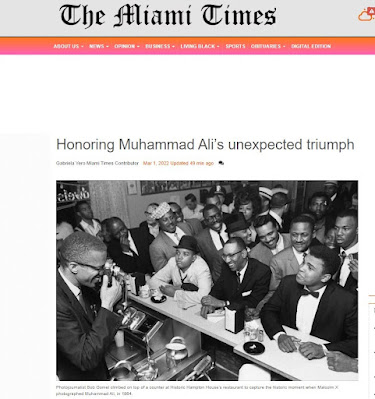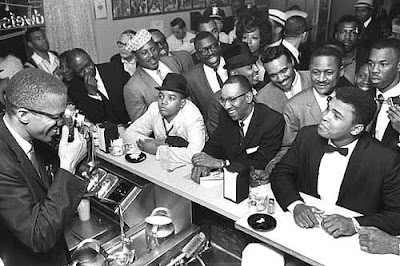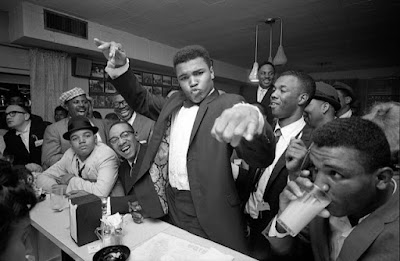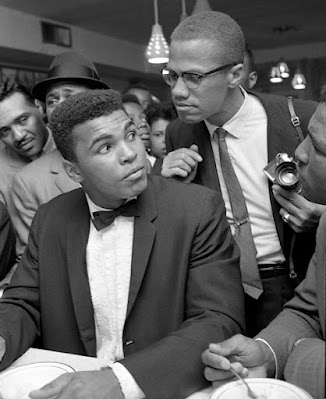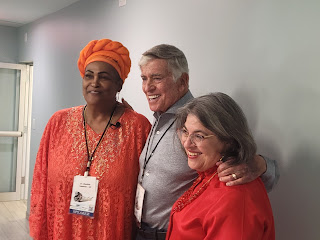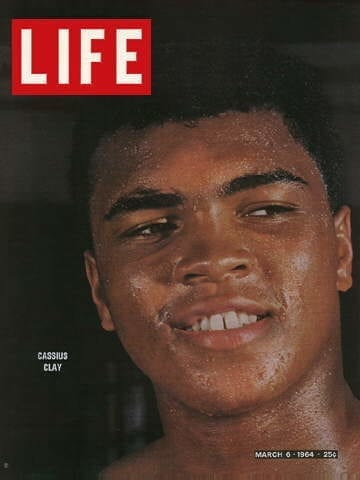April 19, 2022
Tuesday, April 19, 2022
Musee Magazine Review: Ed Kash: Abandoned Moments A Love Letter to Photography
Sunday, April 17, 2022
NY Times Features Gallery Photographer Sanjay Suchak's Photographs of Removal of Confederate Statues
April 17, 2022
RICHMOND, Va. — As Devon Henry and his construction team take down the last remnants of statues that long dotted this former capital of the Confederacy, they have developed a grim game.
Random passers-by, some in vehicles, others on foot, often make known their disapproval of Mr. Henry’s work — so often, in fact, that Mr. Henry, who is Black, began to keep count of the many times he or a Black crew member were called an incendiary racial slur.
The count is 72 and climbing, according to Mr. Henry, who has emerged as the go-to statue remover not only for this city, but for all of Virginia and other parts of the South. (Full article)
Monday, April 11, 2022
Photographs by Tony Vaccaro in "O’Keeffe in the Landscape" Exhibition Opening April 19
Via The Georgia O'Keeffe Museum
April 19, 2022 - April 11, 2023
Portrait of O'Keeffe walking at the base of the "smoke stack" at "the White Place;" she is dressed in a black wrap dress, her Hector Aguilar belt, and a white broad-brimmed hat, landscape of white limestone cliffs, spires, and Hoodoos.
While living in New Mexico, Georgia O’Keeffe’s relationship with nature deepened as she spent extended amounts of time in the landscape, exploring the rivers, canyons, and painted cliffs that made up her surroundings during numerous camping and day trips. As a result, O’Keeffe created hundreds of paintings and drawings inspired by nature. O’Keeffe in the Landscape explores these excursions through the photography of her friends and the personal effects she brought with her on her trips, including camping gear and clothing. The exhibition will be on view at The O’Keeffe Welcome Center in Abiquiú, New Mexico from April 19, 2022 through April 11, 2023. The exhibition is free and open to the general public.
The O’Keeffe Welcome Center is the starting point for tours of The O’Keeffe Home & Studio. While The O’Keeffe Welcome Center is free and open to the public, tours of The O’Keeffe Home & Studio require advanced reservations which can be made here.
Sunday, April 3, 2022
Photojournalist Ed Kashi discusses his new book Abandoned Moments and his approach to photojournalism. Monroe Gallery of Photography, April 1, 2022
Saturday, April 2, 2022
Friday, April 1, 2022
Thursday, March 31, 2022
David Butow: From Ukraine
March 31, 2022
"March 15, 2022. Two of the millions of refugees fleeing the war in Ukraine, this woman and her son leave for Poland and a completely unpredictable future. Lviv is one of the funnel points for people trying to get out of the country. I just finished several days photographing these refugees, tracing their steps to the border and beyond.
The escape from Ukraine has become increasingly desperate. More than 2.6 million people have fled the country as Russian troops move closer to major metro areas, shelling civilian infrastructure at random and forcing people to find last-minute transportation to take them to safety.
Train stations are constantly crowded. Aid groups are meeting civilians with food, water and donated clothes. Polish families are taking in Ukrainian refugees, offering up their homes as temporary shelters. The U.S. so far has donated over $100M to help Ukrainians by providing safe drinking water, sanitation and hygiene supplies as well as surgical kit"s. --David Butow
Sunday, March 27, 2022
Portraits, Personalities, Passion: The Photography of Tony Vaccaro Exhibit at The Rye Arts Center April 7th – May 13th.
The Rye Arts Center is proud to present its second exhibition of works by world renowned photographer Tony Vaccaro, following its 1992 exhibit “The Vision of Tony Vaccaro – a Fifty Year Retrospective.” Curated by Patrick Cicalo and Gail Harrison Roman, the exhibition demonstrates how Tony’s visually eloquent photographs provide a cultural history of his time, providing a record of figures in arts and letters and in public life, and scenes of war and death.
As a combat photographer in the Second World War, Tony captured on film wartime images that evoke the determination and camaraderie of soldiers in combat, the pathos of defeat and death, and the joy of liberation, all represented in the exhibit.
Upon his return to the United States, Tony took up fashion and celebrity photography working for major magazines of the postwar era: Harper’s Bazaar, Flair, Life, Look, Newsweek, Time, Vogue, and other popular news and fashion magazines. He amassed a treasure trove of celebrity images from the worlds of television and film, art and architecture, politics, and fashion. Included in this exhibition are portraits of Irving Berlin, Leonard Cohen, Givenchy, Georgia O’Keeffe, Pablo Picasso, Jackson Pollock, and Frank Lloyd Wright, and others.
Much of what is creative in photography today has its birth behind Tony’s lens. His pioneering work in visual interpretation and artistic presentation was a catalyst in the advancement of magazine photojournalism and celebrity portraiture. A selection of Tony’s cameras and memorabilia will be on view as well.
A special section of Tony’s cameras and personal memorabilia, curated by Sarah Mackay, will be on view in the Gallery.
Photographs in the exhibition appear courtesy of Tony Vaccaro Studio and the Monroe Gallery of Photography.
Tony will speak about his work at the Opening Reception, free and open to the public, on Thursday, April 7th from 5:30-7:30pm. Reservations are suggested but not required.
The exhibition will be on view at The Rye Arts Center from April 7th – May 13th.
Gallery hours are Mondays, 9am-3pm; Tuesdays – Fridays, 9am-7pm; Saturdays, 9am-3pm; closed on Sundays.
For more information, go to www.ryeartscenter.org
Friday, March 25, 2022
In Memoriam: Dirck Halstead, 1936—2022
Via The Briscoe Center for American History
March 25, 2022
Dirck Halstead, award-winning photojournalist, freelance photographer, and digital journalism innovator, died on March 25, 2022.
Halstead was a pioneering photojournalist, best known for his work for Time magazine, UPI, and Life magazine. He covered major world events throughout the late twentieth century including the Vietnam War and the fall of Saigon in 1975, five presidential administrations, President Richard Nixon’s trip to China, and the assassination attempt on President Ronald Reagan. He was the publisher and editor of the online magazine the Digital Journalist. Halstead donated his archive to the Briscoe Center in 1995.
Figge Museums "New Photography" Exhibit Includes Gallery Photographer Ryan Vizzions
March 24, 2022
The Figge Art Museum has an extensive photography collection that continues to grow. Beginning Saturday, visitors are invited to step into the Figge’s second-floor Lewis Gallery to view a small selection of the museum’s most recent photographic additions.
Important works by some of the most significant photographers of our time provide us with a brief survey of the collection’s recent growth and the varying impulses that guide contemporary photography, according to a Thursday museum release.
The New Photography exhibition series allows the Figge to share with the QC community some of the museum’s newly acquired works featuring objects, landscapes and figures, including photos that will adorn the Figge’s walls for years to come.
“Despite the proliferation of images made with our smart phones and circulated through social media, dedicated photographers continue to create iconic images that stand above the rest,” said Director of Collections and Exhibitions Andrew Wallace. “From the frontlines of conflict to the frontlines of daily life, photographers reward us with pictures that encourage us to look more closely at the world around us and so that we may better see ourselves.”
Acclaimed 20th-century masters including Lynn Davis and Douglas Prince — as well as recent works by Cara Romero, Victoria Sambunaris, Rebecca Norris Webb, and Ryan Vizzions — will be on view.
From the real to the surreal, the exhibition will highlight photography’s continued ability to engage, inform, and amaze. New Photography will be on view (at 225 W. 2nd St., Davenport) through July 3, 2022.
225 West Second Street
Davenport, Iowa
Thursday, March 24, 2022
Joe McNally: The Real Deal: Field Notes from the Life of a Working Photographer.
March, 2022
By Greer McNally
The Real Deal: Joe McNally’s New Book Bares the Soul of a 40-Year Photo Career
Joe McNally is up at the crack of dawn. In two days, he’ll be off to photograph the Amazon. This trip took two years to plan and has already been moved three times. Before he leaves though, he has to squeeze in a COVID-19 test—just one of many—finish programming the three Nikon Z 9 cameras that are going with him to South America, and chat with Rangefinder about his new book, The Real Deal: Field Notes from the Life of a Working Photographer.
The book isn’t what you might first expect from the internationally acclaimed photographer. It isn’t littered with how-to’s and lighting setups, though they are there. It is a beautifully written, witty snapshot of the changing life of a photographer who’s been in the business for 40 years.
It is a business. And McNally (who has no relation to the author of this article) admits that it has changed dramatically in recent times—advancing camera technology, a shift in social attitudes and the global pandemic have all seen to that. So, why write The Real Deal now? Well, like his Amazonian adventure, it’s actually taken a while to reach fruition.
When McNally, who is also a Nikon Ambassador, signed the contract with his publisher Rocky Nook five years ago, there was no deadline. “They told me to write it when I felt it,” he explains. “To write it when I could.” Today, he is grateful for his editor, Ted Waitt, and Rocky Nook’s patience. The time has allowed him to create something that he hopes is different from other how-to books.
“There is an overwhelming amount of information out there about photography and a lot of it is technique-based,” McNally says. “It’s wonderfully instructive. But what I wanted to get across was the feeling of being a photographer—the journey.”
McNally’s own 40-year creative journey leading up to The Real Deal book has seen him ascend from copy boy at New York’s Daily News, a job he almost turned down (“I wanted the title of photographer,” he says) to wire services, magazines, advertising, corporate, marketing, internet, social and, of course, digital. Thinking back to that first job, and reflecting on where he is today, he realizes how lucky he was. “As crude and humble as those beginnings were, they formed a good bedrock to jump off from,” he says. It also taught him to take risks as a photographer.
His approach is simple: “If I show up and think ‘Wow, that’s amazing, I’ve never seen anything like that before,’ then that’s what I shoot.”
On one occasion, he remembers climbing the Queensboro Bridge in New York without a safety harness or credentials to get a shot. “I vaguely said I was with the paper,” he recalls. It wouldn’t be the last time he scaled a great height to find an eye-catching viewpoint. Years later, when sent to chronicle the new docklands springing up in the East End of London, he was challenged with capturing the changes in a way different to his contemporaries. He befriended a construction worker and ended up inched out along a crane arm to photograph a bird’s eye view of the city from above.
Today, both shots would either be taken by drone or need permits and a pile of paperwork to be done in person. He seems to miss the freedom of just putting it all out there to get an exposure, and it was definitely a prompt for writing The Real Deal book. “I wanted to provide an overview of how drastically things have changed over time, while retaining the core mission of being a good storyteller,” he says.
Some of those changes have been good, but others not so much, he feels. “We live in a golden age of photography. The equipment we have is phenomenal, but the hard part is monetization. How do you make a living? How do you get someone to fund your projects?”
This is where McNally’s 40 years of industry knowledge kick in within the pages of The Real Deal book. He advises on career paths: “Drive yourself to the point of finding out what you’re really good at, what you’re happy shooting, and what you will still be happy shooting in ten years. Then follow that track,” he advises. He also emphasizes the importance of writing a coherent creative proposal, among other things. And it is all done in a compelling narrative voice.
McNally was studying to be a writer before he caught the photography bug. That connection between the written and the visual makes his memories big, bold and colorful, much like his pictures. You need only look at his portrait of a smiling Hillary Clinton or a dancer flying through the air to see the clear signatures in his work.
And there’s more to come. This year, he’s teaching a number of workshops, and he is tempted by the idea of writing again. A novel is already underway—he has, as he puts it, “some bones down on a sheet of paper.” He’s got another huge project that’s in the production stage, which is still very hush hush. But with shooting set for the first week of April, we’re bound to see some signs of it soon.
The Real Deal: Field Notes from the Life of a Working Photographer
Tuesday, March 22, 2022
‘The Godfather’: Capturing the Corleones Through the Lens of Photographer Steve Schapiro
"The Godfather is widely regarded as one of the greatest films in the history of cinema. And with the original film celebrating its 50th anniversary this year, Paramount Pictures is releasing a special anniversary edition of the entire trilogy on 4K Ultra HD on March 22. Ahead of the release, Collider has gotten an exclusive look at some of the bonus content available with the 50th Anniversary Collectors Edition and the re-released trilogy. You can now take a look inside the film and behind the scenes with the late, legendary photographer Steve Schapiro who captured several stunning and intimate moments on the set of The Godfather in 1971.
Schapiro passed away earlier this year, but his legacy continues on through the photos he took. He captured many incredible images during his lifetime, including several iconic shots from the Civil Rights movement during the 1960s. In the 1970s, he was hired by Paramount Pictures as their on-set photographer. He would go on to immortalize scenes within movies like The Godfather, Chinatown, and Taxi Driver, as well as exclusive off-camera moments of actors and crew members at work. In the behind-the-scenes featurette, which you can watch below, Schapiro discusses some of his favorite shots from his work on The Godfather." --Collider
Friday, March 18, 2022
Ed Kashi Exhibit and Book Event In The News
Today marks the start of the new exhibit "Ed Kashi: Abandoned Moments", now on view through April 24. Please join us live in the Gallery or on-line via Zoom for a special discussion with Ed Kashi on April 1 at 5:30 (MDST).
WIDEWALLS
Monroe Gallery of Photography Announced Exclusive Representation of Ed Kashi
ART DAILY
Monroe Gallery of Photography announces representation of photojournalist Ed KashiThursday, March 17, 2022
David Butow in Ukraine for POLITICO
In January, we were honored to host photojournalist David Butow for an exhibition and discussion about his new book "Brink".
He is now covering the massive humanitarian crisis inside Ukraine and along its borders. POLITICO recently featured his photographs in the essay "On the ground in Ukraine, in photos: Millions flee their homes amid intensifying Russian attacks." Click to view.
Monday, March 14, 2022
Ed Kashi exhibition March 18 – April 24; Book signing and Gallery talk April 1
Santa Fe, NM -- Monroe Gallery of Photography is honored to announce exclusive representation of Ed Kashi, a renowned photojournalist, filmmaker, speaker, and educator dedicated to documenting the social and political issues that define our times.
A new exhibit celebrates “Abandoned Moments: A Love Letter to Photography” (Kehrer Verlag, March 2022) his newest book; featuring photographs made over a 40-year period that reveal imprecise glimpses of transitory events filled with frenetic energy – the chaos of everyday life.
On April 1, Ed Kashi will be in discussion in the Gallery and streaming on-line via Zoom. Event starts promptly at 5:30 pm (MT), RSVP and Zoom registration at 505.992.0800, www.monroegallery.com, or info@monroegallery.com
Kashi’s sensitive eye and an intimate and compassionate relationship to his subjects are signatures of his intense and unsparing work. As a member of VII Photo Agency, Kashi has been recognized for his complex imagery and its compelling rendering of the human condition. Kashi continues to create compelling imagery and engage with the world in new ways.
“I take on issues that stir my passions about the state of humanity and our world, and I deeply believe in the power of still images to change people’s minds. I’m driven by this fact; that the work of photojournalists and documentary photographers can have a positive impact on the world. The access people give to their lives is precious as well as imperative for this important work to get done. Their openness brings with it a tremendous sense of responsibility to tell the truth but to also honor their stories.”
– Ed Kashi
Abandoned Moments Book Trailer from Ed Kashi on Vimeo.
Saturday, March 5, 2022
Nina Berman: When the Jets Fly
Via MIT Knight Science Journalism
Journalist Nina Berman has been reporting on the hostile sonic environment that U.S. military training is creating in some civilian communities.
Friday, March 4, 2022
BRINK: Photographs by David Butow on view in the Reva & David Logan Gallery for Documentary Photography
Via Berkeley School of Journalism
CANCELLED
Photographs by David Butow
on view in the Reva & David Logan Gallery for Documentary Photography
UC Berkeley Graduate School of Journalism, North Gate Hall
A live conversation with photographer David Butow and Berkeley Journalism Prof. Ken Light, followed by Q&A with Berkeley Journalism students Kathryn Styer Martínez ('23) and Mathew Miranda ('22)
Live stream:
https://youtu.be/7uUVql_0Kmo
Friday, March 11, 2022 | 5:00-6:00 PM (PT)
Statement from David Butow:
A few weeks before the 2016 presidential election, I traveled to the swing states of the upper Midwest to try to get a sense of what was driving support for Donald Trump. I fully expected Hillary Clinton to win but Trump had tapped into something I didn't understand, and I was surprised that this self-centered, unscrupulous businessman who seemed to have no interest in government, was the Republican nominee.
His stunning victory, and the sense that the country would go through a very strange period, compelled me to move from California to Washington, D.C. I'd spent decades as a photojournalist covering, in part, the results of public policy, but I'd never worked inside the halls of power in the nation's capital. This seemed like a good time to do it, and while I expected the incompetence, I underestimated the treachery.
The first three years were an endless stream of scandals, highly-charged congressional hearings on Capitol Hill and declassé press events at the White House. I was curious what happened outside of the frame of television cameras and tried to make photographs that were different from typical pictures designed for the daily news cycle and quick hits on the web.
In 2020, everything changed. The drama and tension was acute, and visceral. Americans were dying of COVID-19 by the thousands, the administration was slow to respond and protests of the murder of George Floyd pressed up to the very gates of the White House. Late in the year, after Joe Biden's victory, the president and his hard-core supporters laid the groundwork for challenging the election.
On the afternoon of January 6, 2021 I was standing on the west steps of the Capitol watching something so surreal, dramatic and terrible, for a few seconds, or maybe it was minutes, I lowered my camera and just tried to process what I was seeing through the foggy view of my gas mask. The next few weeks at the Capitol were unrecognizable, as young National Guard troops carrying loaded machine guns stood on patrol behind miles of razor wire, protecting U.S. democracy from its own citizens.
It was then that I knew I must organize the work I'd begun four years earlier into a narrative that would at least illuminate the arc of events that had brought the country to this point. We lived through history minute by minute, so much so that the gravitas of what transpired is apparent only when you step back and see how the whole saga unfolded. As revisionists seek to trivialize or downplay the events of 2016-21, it's critical to maintain a record of just how close the presidency of Donald Trump brought U.S. democracy to the brink of collapse.
Four years ago, I thought this period would be an aberration. Regrettably, I no longer hold that view.
Wednesday, March 2, 2022
"This past Saturday, Hampton House hosted “Round Five: The Knockout,” a conversation with photojournalist Bob Gomel"
Monday, February 28, 2022
Gallery Photographer Bob Gomel Returns To The Historic Hampton House After 58 Years
This past weekend, Bob Gomel returned to the site of where some of his most historic and iconic images were made 58 years ago.
In February of 1964, Muhammad Ali, then as Cassius Clay, was training for his Heavyweight Championship fight in Miami with Sonny Liston, Bob Gomel was assigned by Life magazine to cover the matchup. Clay was an 8–1 underdog, but Gomel was assigned to take photographs of him in advance of the fight that could be used on the cover of the next weekly Life issue in case Clay upset Sonny Liston.
History was made on Tuesday night, February 25, 1964 as Clay defeated Lison in a 7-round TKO. Bob Gomel was ringside photographing the fight, and instinctively followed the triumphant Clay back into his dressing rom. From there, he accompanied the crowd to the Hampton House Motel for a celebration with ice cream along with Malcolm X and an entourage. The story was later shared on the big screen in the movie "One Night In Miami".
Shortly thereafter, bolstered by his mentor Malcolm X, Clay stepped in front of a room of journalists to declare his conversion to the Nation of Islam. After fielding hostile questions, he voiced the words that would become his lifelong anthem and would forever change the world of sports: “I don’t have to be what you want me to be.”
Monday, February 21, 2022
Listening with his camera: The late photographer Don Hunstein captured a golden age of music
Via the Daily Hampshire Gazette
It’s arguably one of the most iconic album covers of all time, certainly in the folk and pop world: a young Bob Dylan, on the cusp of stardom, walks down a slushy street in Greenwich Village in New York City, hands in his pockets and shoulders hunched against the cold, as his girlfriend, Suze Rotolo, clings to his left arm.
That image, from the 1963 disc “The Freewheelin’ Bob Dylan,” came out of a session that Don Hunstein, a longtime director of photography for Columbia Records, had staged with Dylan in the singer’s nearby apartment, capturing the rising folk star as he played his acoustic guitar, sprawled in a beat-up armchair, and tried at one point to smoke and sing at the same time — another memorable shot
Those are just two of hundreds of impressive images that are now preserved on a website dedicated to Hunstein’s work, a site put together by Hunstein’s daughter, Tina Cornell, who lives in Florence with her family, and cdeVision, a Holyoke web studio specializing in advertising, website design and more.
Along with taking many shots of Dylan in his early career, Hunstein, who died in 2017, photographed a huge array of stars on Columbia’s roster from the late 1950s into the 1980s: Billie Holiday, Aretha Franklin, Miles Davis, Dave Brubeck, Barbara Streisand, Simon and Garfunkel, Johnny Cash, Janis Joplin, Billy Joel.
The photographer also shot hundreds of album covers, including Loretta Lynn’s memorable “Coal Miner’s Daughter” from 1970, as well as the records of classical musicians including pianist Glenn Gould.
Hunstein, born in 1928 in Missouri, grew up in St. Louis but settled in New York in the 1950s. He made his mark as a documentary photographer — his adopted home was a favorite subject — whose unobtrusive style, Cornell says, helped put his subjects at ease.
As one of his obituaries noted, “Don had the ability to listen with his camera. Instinctively he under stood that to capture artists at their best moments, patience, trust and humility were needed.”
Now Cornell and her mother, DeeAnne Hunstein, who also helped develop the website, are hoping to bring some more attention to Hunstein’s work, in turn highlighting an era when photography became an important tool for documenting the cultural history of music.
“My dad was humble to a fault, just very self-effacing,” Cornell said during a recent phone call. “He didn’t act like a fan [of musicians] or put himself out there like he was some kind of big shot … He saw this as a job, and he always said he was lucky to be at the right place at the right time.
“And yet he created all these great images,” she noted. “People liked him — they felt comfortable around him, he was good at making a joke, and that’s why he was able to do what he did.”
Case in point: Cornell says Johnny Cash could sometimes be testy with reporters and photographers, but her father and the gritty country singer hit it off, with Cash inviting Hunstein to visit him on his Texas ranch in the late 1950s.
Though Hunstein mostly took black and white photos, his website offers a couple especially atmospheric images of Cash in color. In one, wearing a checked shirt and a straw hat, he leans on a worn wooden fence rail and looks off moodily into the distance. In another, the singer, this time decked out in dark suit and white shirt, sits with his guitar on a huge woodpile, his nearby open guitar case revealing a bright purple interior.
“I love that mix of colors!” Cornell said.
hen there’s the near-silhouette of jazz great Thelonious Monk, hunched over a piano, a cigarette dangling from his mouth (there was a lot of smoking in Columbia’s studios in those days). And Cornell says one of her father’s favorite photos was an image he took of Duke Ellington, his “all-time hero,” as she puts it.
“My dad used to say he was really lucky to have this job, because he was such a huge music fan himself,” she said.
‘Don Hunstein did all this?!’
Bill Alatalo, a co-partner of cdeVision with Antonio Costa, says the company actually first designed a website for Hunstein’s work perhaps a dozen years ago after Cornell first approached them. It was a simpler affair, with far fewer images, Alatalo notes, in part because Cornell and her mother were busy at the time trying to help Hunstein, who struggled with Alzheimer’s disease for about a decade before his death.
Then Cornell got back in touch about a year ago, Alatalo said, and asked if cdeVision could develop a new site. “The old one kind of got lost in the shuffle, and at this point Tina had a lot more photos for us to work with,” he said. “Antonio and I were amazed — we were like, ‘Don Hunstein did all this?!’ ”
As a music lover and record collector himself, Alatalo says the Hunstein website “has just been a cool project to work on, to really give it some play and give people a better sense of what he did.” The website also dovetails with other music-related work cdeVision has done in recent years, Alatalo said, such as designing a new site for Hawks & Reed Performing Arts Center in Greenfield.
For Cornell, who was born in 1968, her father’s website is a deeply personal project. She was inspired by his work as she got older, she says, and studied photography herself as well as drawing and painting. She came to the Valley about 20 years ago with a former partner, and the couple had plans then to create a pottery studio. Today she works as a jeweler and goldsmith and also is involved with a local chapter of an environmental group, Mothers Out Front.
She can remember going as a kid to her father’s studio at Columbia Records, then located in a building on 52th Street near 5th Avenue in Manhattan, and “playing with the props” while her dad was arranging shots of various artists.
“It wasn’t until I was older that I really developed an awareness of the full scope of his work,” she said.
Cornell and her mother have also established the new website as a means of protecting the provenance of Hunstein’s work. Some of his photos now crop up online, such as on people’s Instagram sites, and go uncredited, she noted, and she’s had to ask people to remove the pictures.
In addition, the Sony Corp. bought Columbia Records (and Columbia Pictures) in the late 1980s, acquiring all of Hunstein’s work for the record label, and Cornell and her mother have since worked with Sony to gain access to many of those images.
Ultimately, Cornell says, the website is designed to reacquaint people with her father’s work and his era as a photographer. He never took to computers or digital photography, she notes, instead working with contact sheets in his darkroom, giving his photos a distinctive style and pedigree that she believes is worth commemorating.
More are added to the website regularly, she says, and the site also has many images her father took of Puerto Rican communities in New York City in the early 1960s, part of a book project for an English publisher.
“My dad was just a huge part of my life,” she said. “This is my way of honoring that.”
Sunday, February 20, 2022
Ansel Adams: Pure Photography at the New Mexico Museum of Art
Ansel Adams is one of the first names that springs to mind when people think about photography. This exhibition of sixteen prints from the museum’s collection, augmented with two promised gifts, concentrates on the photographs that Adams made around 1932, before he became a household name.
In the late 1920s, Adams shifted away from the soft-edged style of pictorialism, prominent in the early twentieth century, toward hard-edged modernism. In 1932, he and several of his San Francisco Bay Area compatriots formed Group f/64 and issued a manifesto declaring their dedication to “pure photography.” For Adams, that meant a commitment to the precision of the camera; use of glossy, high-contrast photo paper; and visualization of the final image before releasing the shutter.
Ansel Adams: Pure Photography includes close-up nature studies, portraits, and views of architecture Adams made during this formative time. A small selection of later photographs, including two of his most iconic prints, Aspens, New Mexico and Moonrise, Hernandez, New Mexico. The artist’s hard work and ambition come to fruition in these later images, illustrating how his work of the 1930s developed into the mature style for which he is internationally celebrated.
Related: A look at the early, intimate works of photographer Ansel Adams
Wednesday, February 16, 2022
The Greatest Weekend, with Bob Gomel
Via The Historic Hampton House
The event commemorates the legacy of Cassius Clay's (Muhammad Ali's) momentous victory against Sonny Liston on February 25, 1964.
About this event
The Greatest Weekend is a three-day inaugural festival taking place at the Historic Hampton House Museum & Cultural Center in Brownsville, Miami, Florida, on February 25-27, 2022.
The event commemorates the legacy of Muhammad Ali’s momentous victory against Sonny Liston on February 25, 1964, in Miami Beach, which earned him boxing's World Heavyweight Championship title.
The Line-Up
Join us for discussions Ringside, Music in the Courtyard, Food Court with food trucks and vendors at the Villagers Welcome Plaza (West entry) with friends of The Historic Hampton House.
*Schedule is subject to change*
Friday, February 25th - Welcome to The Greatest Weekend-6:00 to 11:00 PM
6:00 PM Opening Reception - Kick-off the evening with lite bites and drinks. 6:30 PM Welcome and Evening Festivities! 7:00 PM-The Weigh-In-Sonny Liston and Cassius Clay Discussion lead by Boxing Historian Ramiro Otero 8:00 PM-Round One: Clay in Allapattah-The story of Cassius Clay living in Miami through the eyes of neighbors, moderated by Calvin Hughes 9:00 PM - The Concert - Carla Cooke (daughter of Sam Cooke) graces The Hampton House Stage.
Saturday, February 26th - The Boxing Match Continues! Round for Round-10:00 AM to 6:00 PM
10:00 AM-Round Two: Fifth Street Gym-Training Cassius Clay, a discussion narrative of his training. 11:15 AM-12:15 PM-Round Three: Third Man in the Ring-Whom did you come to see? The referee is the main attraction, decisions, and calls during the fight. 12:30-1:45 pm-Have a seat in Your Corner: LUNCH IN THE FOOD COURT - Enjoy the fare from local food trucks and shop with vendors in the courtyard at the Historic Hampton House. 2:00-3:15 PM-Round Four: Women Around The Ring-Calling to Remembrance, the life of Cassius Clay, boxing through the eyes of love and friendship moderated by Tameka Hobbs. 3:30-5:00 PM-Round Five: The Knockout-Knockout Shots! A conversation with photojournalist Bob Gomel, returning to The Historic Hampton House after 58 years.
MUSIC, FOOD FESTIVITIES CONTINUE IN THE COURTYARD AND FOOOOOOD COURT!
Sunday, February 27th - The Historic Hampton House Tours at 11:00 AM, 1:00 PM, and 4:00 PM
The event is FREE but must have tickets to enter the museum. Get tickets here.
Food Court does not require tix but admission will be limited. It’s gonna be a real KNOCKOUT! Come be a part of the Inaugural event of Great Conversation, Music, Dance, Food, and Fun!!
You can help the Historic Hampton House raise funds to acquire Bob Gome's prints to stay at the Historic Hampton House for permanent display here.
Thursday, February 10, 2022
"David Butow was working in D.C. during some of the most historic moments of the last five years"
BY Andrew Freeman
February. 09, 2022
ROCHESTER, N.Y. — Some of the most historic moments of the last five years are now on display in Rochester.
It's the work of a photojournalist in Washington, D.C. who describes what the pictures say that the written word can not.
David Butow sees coaching aspiring students as an absolute privilege.
"I see the enthusiasm these 20-year-olds have right now," said Butow. "I shared that exact same feeling and that sense of excitement when I was that age."
He was at the Rochester Institute of Technology helping to review student portfolios. His own photography has taken him all over the world.
"No matter where you’re from, you can look at a picture of another human being and have a certain, perhaps, empathy for them, and relate to them on a very basic, human level," he said.
In downtown Rochester, RIT’s City Art Space is hosting a gallery of some of his most recent work. It's a collection from his new book "BRINK," which chronicles the presidency of Donald Trump.
"I just thought this is going to be a very unusual time in American politics and maybe American history, and I just wanted to see it up close," said Butow. "That’s kind of the instinct of a journalist."
RIT Assistant Professor Jenn Poggi served as a key editor of the project.
The two used to work together at U.S. News & World Report in the early 2000s.
"The beautiful work always pops out, the amazing work," said Poggi. "I think the challenge comes from… what’s the narrative you’re trying to construct. And sometimes that means losing an image that could be a favorite, but doesn’t quite match with the direction the book is trying to take."
David was working in D.C. during some of the most historic moments of the last five years.
"I’m really curious what happens outside the frame of the TV camera," Butow said. "So it’s sort of like, what’s it actually like to be there? What are the things you see that you can’t see when you’re watching this big hearing on TV?"
His work concluded with the January 6 insurrection where hundreds stormed the U.S. Capitol.
"The scale of this, and the amount of violence and energy pushing up into the Capitol, took me completely by surprise," he said.
The event gave him the name of his book: "Brink."
"And that’s when really the gravitas of what has transpired became apparent to me," Butow said. "That there was no denying how serious of a period in American history it was, and how close our democracy came to not functioning."
But whether people buy his book or come view the exhibit downtown, Jenn and David hope it helps people experience history in a different way.
"I think that the book and exhibit seek to ask a lot of questions, more than give answers," Poggi said. "And I hope people think about that."
"There were so many small things that happened every day, day after day, that you sort of forget what it all added up to," Butow said. "And how significant of a moment in U.S. history it was. And it’s still continuing, a lot of these dynamics are still very much in place."
The exhibit and gallery are located near the Liberty Pole in downtown Rochester. It's free and open to the public through Feb. 20.
BRINK is also on exhibit through February at Monroe Gallery of Photography


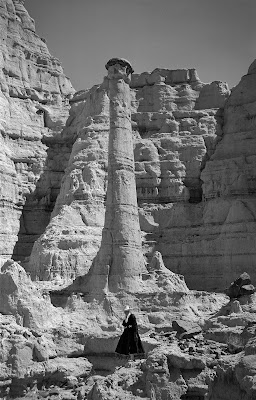


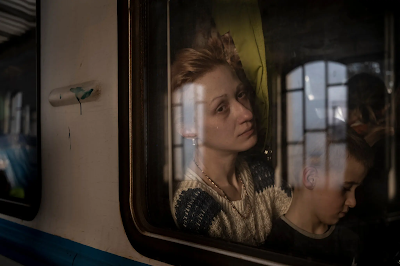
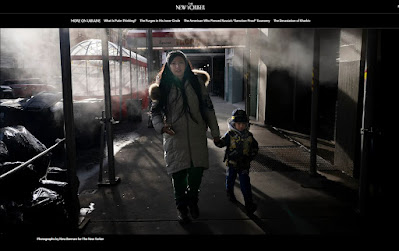

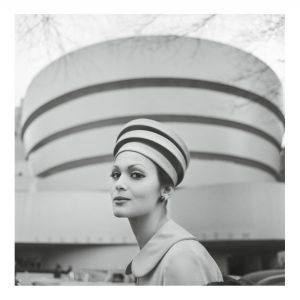
.jpg)




